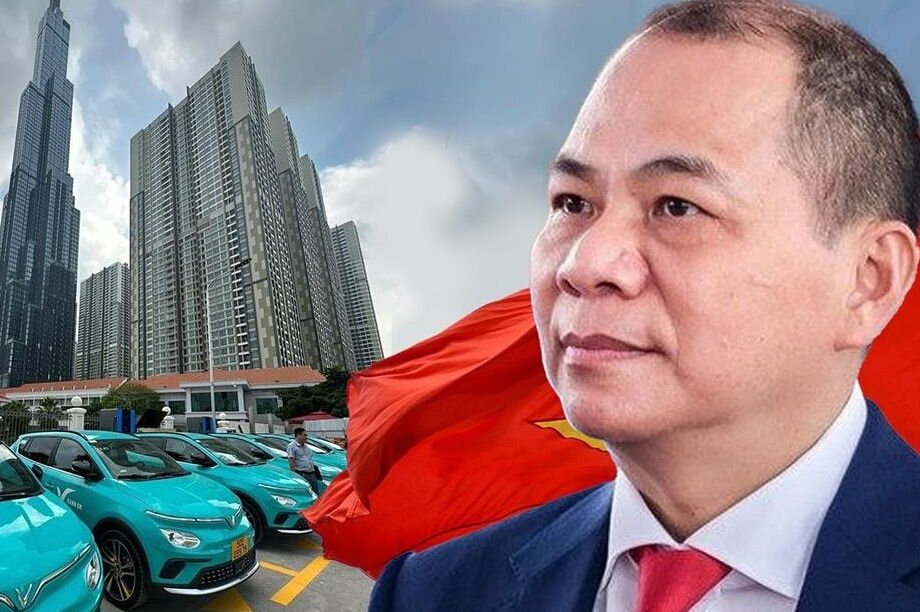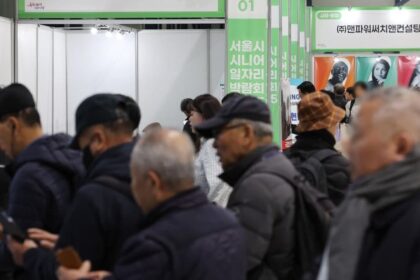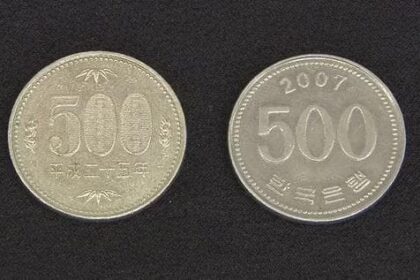Vingroup’s Mounting Debt: A Hidden Crisis Behind Vietnam’s Corporate Giant
Vingroup, Vietnam’s largest conglomerate and a symbol of the country’s economic aspirations, is facing a debt crisis of unprecedented scale. The company, led by Vietnam’s richest man, Pham Nhat Vuong, has built an empire spanning real estate, retail, healthcare, and most ambitiously, electric vehicles (EVs) through its subsidiary VinFast. But beneath the surface of rapid expansion and glossy headlines lies a financial reality that threatens not only Vingroup’s future but also the stability of Vietnam’s corporate landscape.
- Vingroup’s Mounting Debt: A Hidden Crisis Behind Vietnam’s Corporate Giant
- How Did Vingroup Accumulate Such Massive Debt?
- VinFast: The Ambitious Gamble That Changed Everything
- Accounting Irregularities and Reliance on Founder’s Wealth
- Currency Risks and International Exposure
- Regulatory Scrutiny and Market Volatility
- Strategic Shifts: Retreat from the West, Focus on Emerging Markets
- The Broader Implications: Too Big to Fail?
- Is Break-Even by 2026 Realistic?
- In Summary
As of the second quarter of 2025, Vingroup’s total liabilities have soared to $31 billion, representing a staggering 86% of its total assets. This debt load requires daily interest payments of $3.2 million, a burden that has forced the conglomerate into a relentless cycle of asset sales, capital raising, and financial engineering. The company’s own financial reports and independent analyses reveal a business model increasingly reliant on short-term borrowing, opaque accounting, and the personal wealth of its founder to stay afloat.
How Did Vingroup Accumulate Such Massive Debt?
The roots of Vingroup’s debt crisis can be traced to its aggressive expansion strategy, particularly its foray into the global electric vehicle market. Since launching VinFast in 2017, Vingroup has poured billions into developing EVs, building factories, and attempting to establish a global brand. This high-risk, high-reward approach was meant to catapult Vietnam onto the world stage as a player in the future of mobility. Instead, it has exposed the company to mounting losses and escalating financial risk.
In the first half of 2025 alone, Vingroup’s debt increased by $4.7 billion. Short-term liabilities—debts that must be repaid within a year—now account for over $19.5 billion, or 63% of the total. These obligations are rapidly approaching maturity, putting immense pressure on the company to find new sources of cash. Vingroup has responded by selling off stakes in subsidiaries, such as a $1.6 billion sale of shares in Vincom Retail, and by securing new loans from international banks, including Deutsche Bank and the Asian Development Bank.
Yet, these measures have only bought time. The company faces significant repayment deadlines in 2026, including $860 million in credit loans and $1.14 billion in bond interest. With just over $3 billion in cash on hand, Vingroup’s ability to meet these obligations is far from certain.
VinFast: The Ambitious Gamble That Changed Everything
At the heart of Vingroup’s financial woes is VinFast, the electric vehicle manufacturer that was supposed to be the group’s crown jewel. Instead, VinFast has become a massive cash drain. Since its inception, the company has never turned a profit. In the first half of 2025 alone, VinFast’s automotive business lost over 37 trillion dong (about $1.5 billion). Over the past three years, its cumulative losses have reached $5.7 billion, with net losses of $2.4 billion in 2023 and nearly $3.2 billion in 2024.
VinFast’s global ambitions have proven costly and fraught with setbacks. The company’s attempt to break into the U.S. market began with fanfare—a shipment of 999 VF8 vehicles and plans for a $2 billion factory in North Carolina. But the American dream quickly soured. The initial shipment was returned for failing to meet safety standards, showrooms were shuttered, and the factory project was postponed until at least 2028. Meanwhile, VinFast’s stock, which briefly soared to a $23 billion market capitalization after its Nasdaq debut in August 2023, collapsed by over 90% within two months. As of August 2025, the company’s market cap stands at just $8.35 billion.
Sales Figures: A Closer Look at the Numbers
Despite claims of “strong EV sales,” the reality is that VinFast has struggled to attract retail buyers, especially outside Vietnam. In 2023, the company sold 35,000 EVs—well below its 50,000 target and a fraction of its 300,000-unit production capacity. Most of these sales were not to ordinary consumers but to affiliated companies owned by Vuong, such as the ride-hailing service Xanh SM (Green SM), which purchased 82% of VinFast’s vehicles that year. This internal sales loop, propped up by heavy discounts and cross-promotions with other Vingroup businesses, has raised questions about the true market demand for VinFast’s products.
For example, Xanh SM, which rents out electric taxis and scooters, spent $839 million on VinFast vehicles in 2023 and signed a $419 million deal for more EVs. Additional sales were made to Vinhomes and VinBus, both part of the Vingroup ecosystem. Analysts have described this strategy as unsustainable, noting that it masks weak retail demand and keeps production unprofitable.
Accounting Irregularities and Reliance on Founder’s Wealth
Vingroup’s financial statements have come under scrutiny for irregularities and a heavy reliance on “other income” entries, often attributed to “sponsorship funds” or direct cash infusions from Vuong himself. In the second quarter of 2025, the company reported a post-tax profit of 2.265 trillion dong ($85.5 million), but this was entirely due to an unexplained 18.516 trillion dong “other income” entry. Without this, Vingroup’s core business would have posted a massive loss of more than 13.9 trillion dong.
This pattern is not new. In 2024, a personal cash injection of around 10 trillion dong from Vuong allowed Vingroup to report a profit. Over the years, Vuong has repeatedly stepped in to prop up the company’s finances, with capital injections totaling more than $13.5 billion since 2017. In 2024, Vingroup and Vuong pledged an additional $3.4 billion in funding for VinFast, with $1.97 billion expected from Vuong personally and up to $1.38 billion from Vingroup through loans, dividends, and asset sales.
Such reliance on the founder’s wealth is highly unusual for a company of Vingroup’s size and raises concerns about the sustainability of its business model. Financial analysts have flagged the company as high-risk, with platforms like Alpha Spread noting that Vingroup’s business profits can cover only 40% of its interest expenses. Major foreign investors have responded by dumping their Vingroup shares, further eroding market confidence.
Currency Risks and International Exposure
Vingroup’s debt crisis is exacerbated by significant currency risk. About 41% of the interest on its total debt is denominated in U.S. dollars, while 92% of VinFast’s revenue comes from the domestic Vietnamese market, where the dong has been depreciating. This mismatch exposes the company to additional financial strain, as it must service dollar-denominated debt with earnings in a weakening local currency.
To secure its massive loans, Vuong has pledged a vast portfolio of assets, including production lines in Haiphong, the VinES battery factory in Ha Tinh, and even the under-construction EV plant in North Carolina. Vingroup also acts as a guarantor for VinFast’s $2.54 billion debt, with over $1.6 billion of that amount coming due in 2025.
Regulatory Scrutiny and Market Volatility
Vingroup and VinFast have faced increasing scrutiny from regulators and investors. In July 2024, the U.S. Securities and Exchange Commission (SEC) rebuked VinFast for inflating revenues in a filing, forcing the company to admit to “accounting errors” that overstated sales by $33.9 million. This incident, along with a class-action lawsuit by shareholders alleging exaggerated prospects, has further damaged the company’s credibility in international markets.
Market perception of Vingroup’s stability is highly sensitive. In July 2025, rumors about Vuong being banned from leaving Vietnam triggered a stock market rout, wiping $490 million off his net worth in just six hours. The Vietnamese government responded with warnings against spreading false information, underscoring the conglomerate’s systemic importance to the national economy. Vingroup employs over 40,000 people and contributes about 2% of Vietnam’s GDP, making its financial health a matter of national concern.
Strategic Shifts: Retreat from the West, Focus on Emerging Markets
After its costly failure to break into the U.S. and European markets, VinFast is now pivoting its strategy. The company has announced plans to focus on Southeast Asia and other emerging markets, where demand for affordable EVs is growing and competition from established automakers is less intense. VinFast’s new VF3 mini EV, priced at $9,200, is designed for mass appeal in these markets, targeting consumers moving from motorcycles to cars.
This shift reflects a recognition that the company’s earlier ambitions were premature. As Pham Nhat Vuong stated at a recent shareholder meeting,
“Big loss. So there is no need to rush.”
VinFast hopes that by building a stronger foundation in emerging markets, it can eventually revisit its global ambitions. Early signs are promising: over 27,000 people applied to buy the VF3 in the first three days after orders opened. However, the company still faces fierce competition from Chinese EV makers like BYD and must overcome challenges related to local manufacturing, charging infrastructure, and consumer trust.
The Broader Implications: Too Big to Fail?
Vingroup’s debt crisis has far-reaching implications for Vietnam’s economy and corporate governance. The conglomerate’s dominance in key sectors and its close ties to the government have led some observers to describe it as “too big to fail.” There are concerns about moral hazard—the risk that the government might feel compelled to bail out Vingroup if its financial troubles threaten the broader economy.
Industry experts warn that Vingroup’s reliance on debt, opaque accounting, and the founder’s personal wealth is unsustainable. The company’s real estate arm, Vinhomes, has traditionally been its profit engine, but Vietnam’s property sector is now in crisis, with tightened regulations, high debt, and oversupply. Vingroup has responded by negotiating asset sales, including shopping malls and real estate, to foreign investors. However, these measures may not be enough to offset the ongoing losses from VinFast and the challenges of international expansion.
As one analyst told Reuters,
“VinFast’s rapid growth has relied on sales to affiliated companies, a trend set to continue as the company struggles to attract retail buyers amid weakening global EV demand.”
This reliance on internal sales and financial support from Vingroup and Vuong raises questions about the true viability of the business.
Is Break-Even by 2026 Realistic?
Despite the mounting challenges, Pham Nhat Vuong remains publicly committed to VinFast’s success. He has vowed to “never give up on VinFast,” with plans to make the company break even by the end of 2026. Achieving this goal would require recouping a cumulative investment of over $20 billion and settling more than $10 billion in debt—a daunting task given the company’s current trajectory.
VinFast’s path to profitability hinges on several factors:
- Successfully scaling up sales of affordable models like the VF3 in emerging markets
- Reducing reliance on internal sales and discounts
- Securing independent capital and strategic investors
- Improving product quality and brand recognition
- Navigating currency risks and global market volatility
While the company has made some progress in expanding its charging infrastructure and tailoring products to local markets, the scale of the financial challenge remains immense. As of mid-2025, VinFast continues to report widening losses, and Vingroup’s net profit margin has nearly halved since VinFast’s U.S. listing.
In Summary
- Vingroup, Vietnam’s largest conglomerate, is facing a debt crisis with liabilities totaling $31 billion—86% of its assets—and daily interest payments of $3.2 million.
- The company’s aggressive expansion into electric vehicles through VinFast has resulted in massive losses, with the subsidiary never turning a profit and losing over $3 billion in 2024 alone.
- VinFast’s global ambitions have faltered, particularly in the U.S. and Europe, leading to a strategic pivot toward emerging Asian markets and affordable EV models.
- Vingroup’s financial statements reveal irregularities and a heavy reliance on founder Pham Nhat Vuong’s personal wealth to cover losses and service debt.
- Currency risks, regulatory scrutiny, and market volatility further complicate the company’s outlook, raising concerns about its sustainability and systemic importance to Vietnam’s economy.
- Despite ongoing challenges, Vuong remains committed to VinFast, aiming for break-even by 2026—a goal that many analysts view as highly ambitious given the current financial realities.












